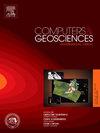利用U-net编码器-解码器方法高效代理时移地震正演建模
IF 4.2
2区 地球科学
Q1 COMPUTER SCIENCE, INTERDISCIPLINARY APPLICATIONS
引用次数: 0
摘要
通过不同的数据同化算法,时移地震(4D地震)正演模拟为标定储层模型提供了重要的数据。不幸的是,传统的四维地震正演建模方法耗时且需要大量的计算资源消耗。为了解决这些问题,在这项工作中,我们的目标是使用一类名为U-Net编码器-解码器的机器学习算法开发4D地震正演建模的代理模型。我们利用UNISIM IV数据集(基于巴西盐下油田真实数据的合成基准)的油藏模拟模型集合,将开发的代理模型应用于基准碳酸盐岩油藏。此外,我们的目标是引入开创性的策略来解释所提出的代理模型操作,其输出以及输入和输出变量之间可能的相关性。为了实现这一目标,我们训练并测试了两个版本的基于u -net的模型,并应用了可解释的人工智能方法,如梯度加权类激活映射(Grad-CAM)和前向特征选择。将实验结果应用于测试数据集,取得了良好的效果。相关系数(R2)在0.7 ~ 0.9之间,表明代理模型替代四维地震正演模拟的有效性。通过定性分析,可以确定储层的哪些输入属性和区域与模型的推断更相关。这些结果是朝着稳健、可解释的基于机器学习的代理前向建模迈出的一步。本文章由计算机程序翻译,如有差异,请以英文原文为准。
Efficient proxy for time-lapse seismic forward modeling using a U-net encoder–decoder approach
The time-lapse seismic (4D seismic) forward modeling provides crucial data for calibrating reservoir models through different data assimilation algorithms. Unfortunately, the traditional 4D seismic forward-modeling methodology is time-expensive and entails significant computational resource consumption. To address these drawbacks, in this work, our goal is to develop a proxy model for the 4D seismic forward modeling using a class of machine learning algorithm named U-Net encoder–decoder. We applied the developed proxy model to a benchmark carbonate reservoir using an ensemble of reservoir simulation models from UNISIM IV dataset (a synthetic benchmark based on real data of a Brazilian pre-salt field). Moreover, we aim to introduce seminal strategies for interpreting the proposed proxy model operation, its outputs, and possible correlations between input and output variables. To achieve this, we trained and tested two versions of U-net-based models and applied methods for explainable artificial intelligence, such as Gradient-weighted Class Activation Mapping (Grad-CAM) and Forward Feature Selection. The experiments showed good results when applied to the test dataset. The correlation coefficient values were in the range of 0.7 to 0.9, showing the efficiency of the proxy model to replace the 4D seismic forward modeling. Through qualitative analysis, it was possible to identify which input properties and regions of the reservoir are more relevant for the model’s inference. These results are a step towards robust, explainable machine learning-based proxy forward modeling.
求助全文
通过发布文献求助,成功后即可免费获取论文全文。
去求助
来源期刊

Computers & Geosciences
地学-地球科学综合
CiteScore
9.30
自引率
6.80%
发文量
164
审稿时长
3.4 months
期刊介绍:
Computers & Geosciences publishes high impact, original research at the interface between Computer Sciences and Geosciences. Publications should apply modern computer science paradigms, whether computational or informatics-based, to address problems in the geosciences.
 求助内容:
求助内容: 应助结果提醒方式:
应助结果提醒方式:


